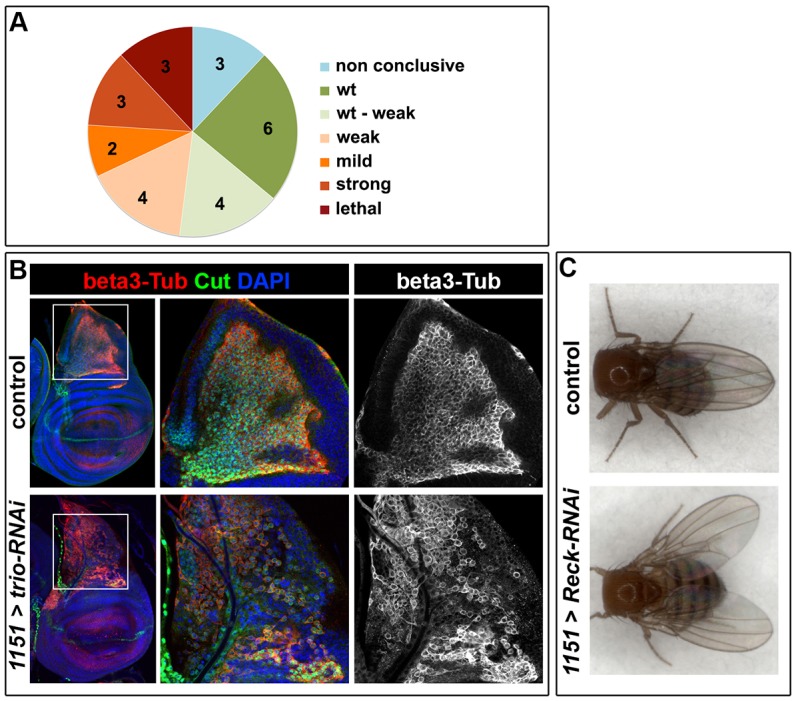Fig. 1.

An RNAi assay identifies genes required for muscle formation. (A) Pie chart showing the proportion of genes whose loss of function resulted in the different phenotypical classes (see Materials and Methods for more details about classes). Note that the 1151-Gal4 driver is expressed in AMPs but not in the larval muscles, to avoid any confounding effects from defects in larval musculature (as might occur with mef2-Gal4). (B) AMP organization in wing imaginal discs from control (1151-Gal4) and trio-RNAi (1151-Gal4 UAS-trio-RNAi) larvae detected with β3-tubulin (beta3-Tub, red). Cut (in green) marks the nuclei of AMPs, and DAPI (blue) labels all nuclei. Altered cell morphology and organization is evident in trio-RNAi-expressing flies compared to control (representative examples of intermediate severity are shown). White squares indicate the regions shown at higher magnification. (C) Dorsal view of control (1151-Gal4) and 1151-Gal4-driven Reck-RNAi adult flies. The defective position of the wings observed, a ‘held out wings’ phenotype, has often been associated with flight muscle defects (Greene et al., 2003; Zaffran et al., 1997).
